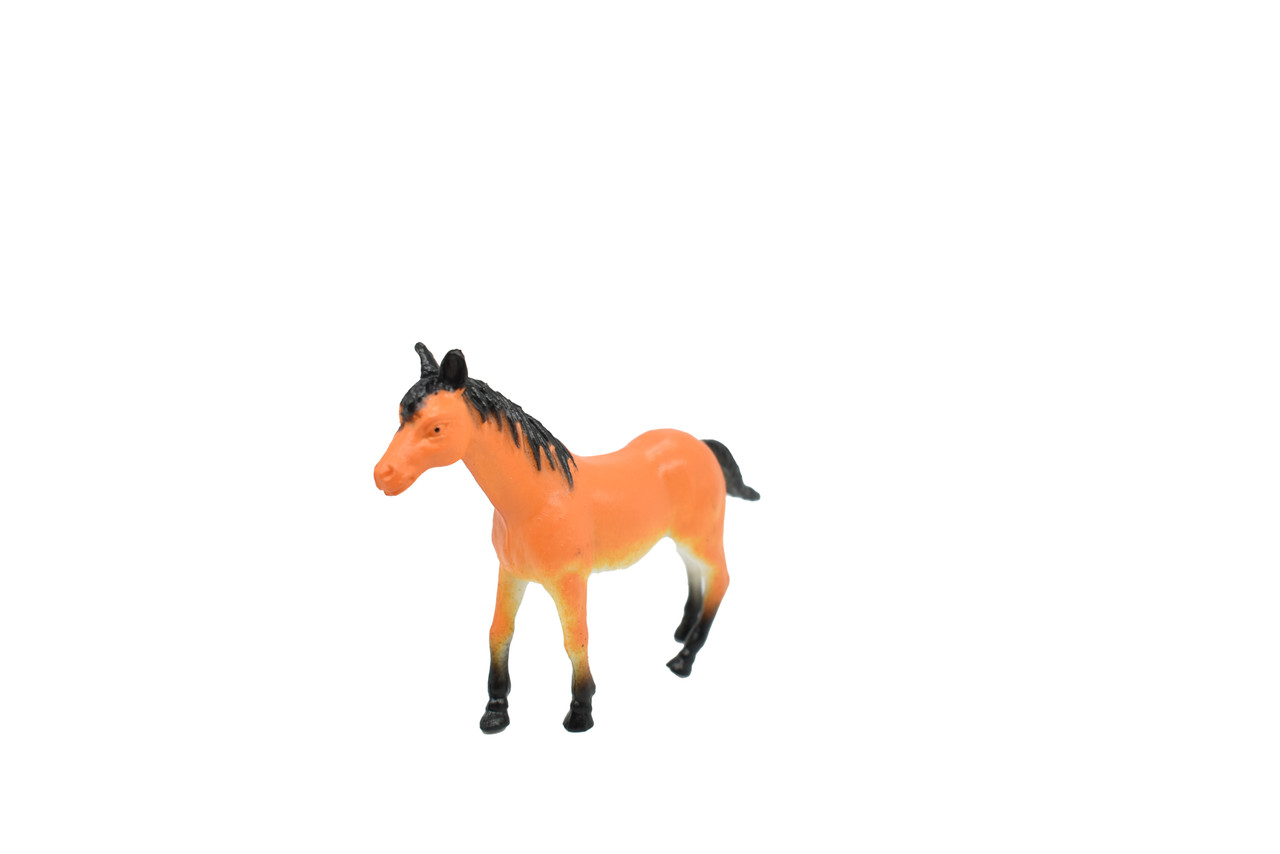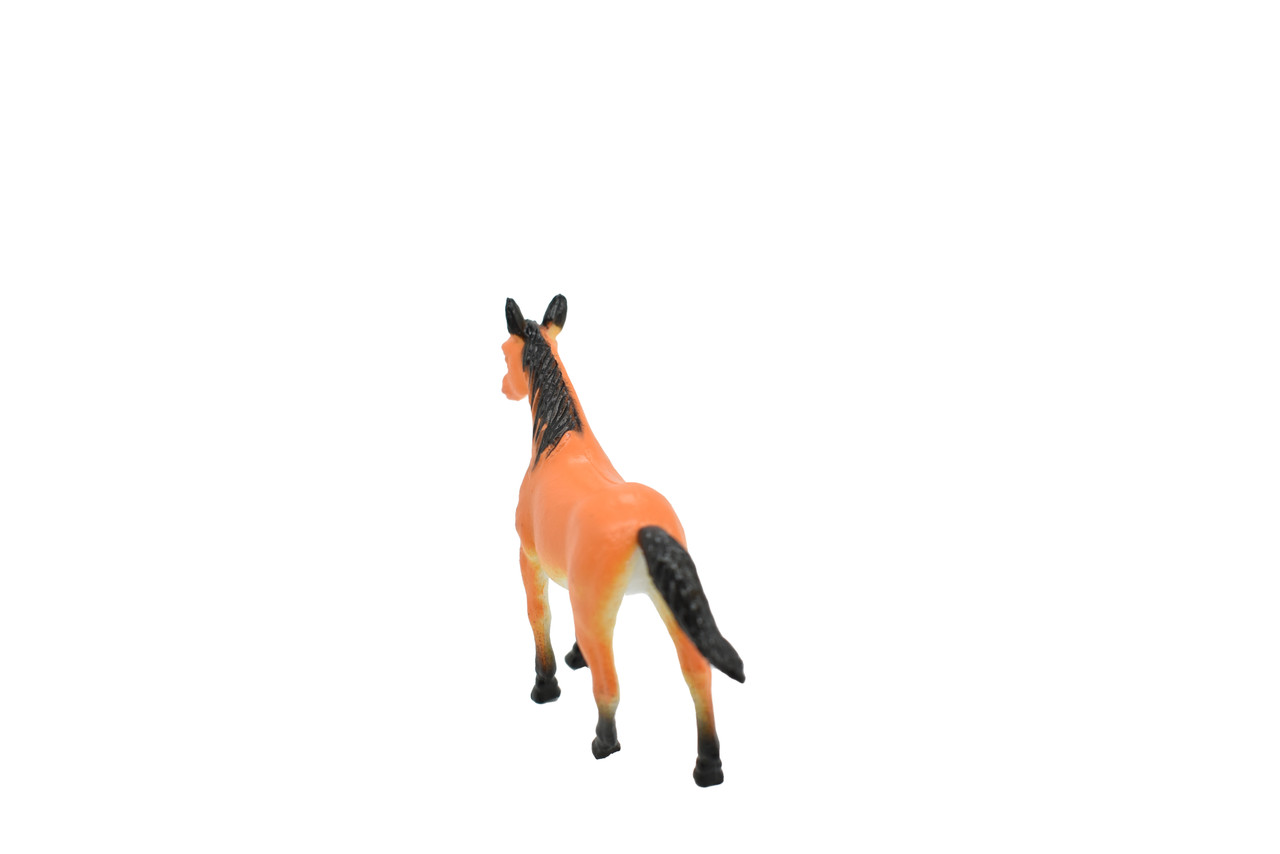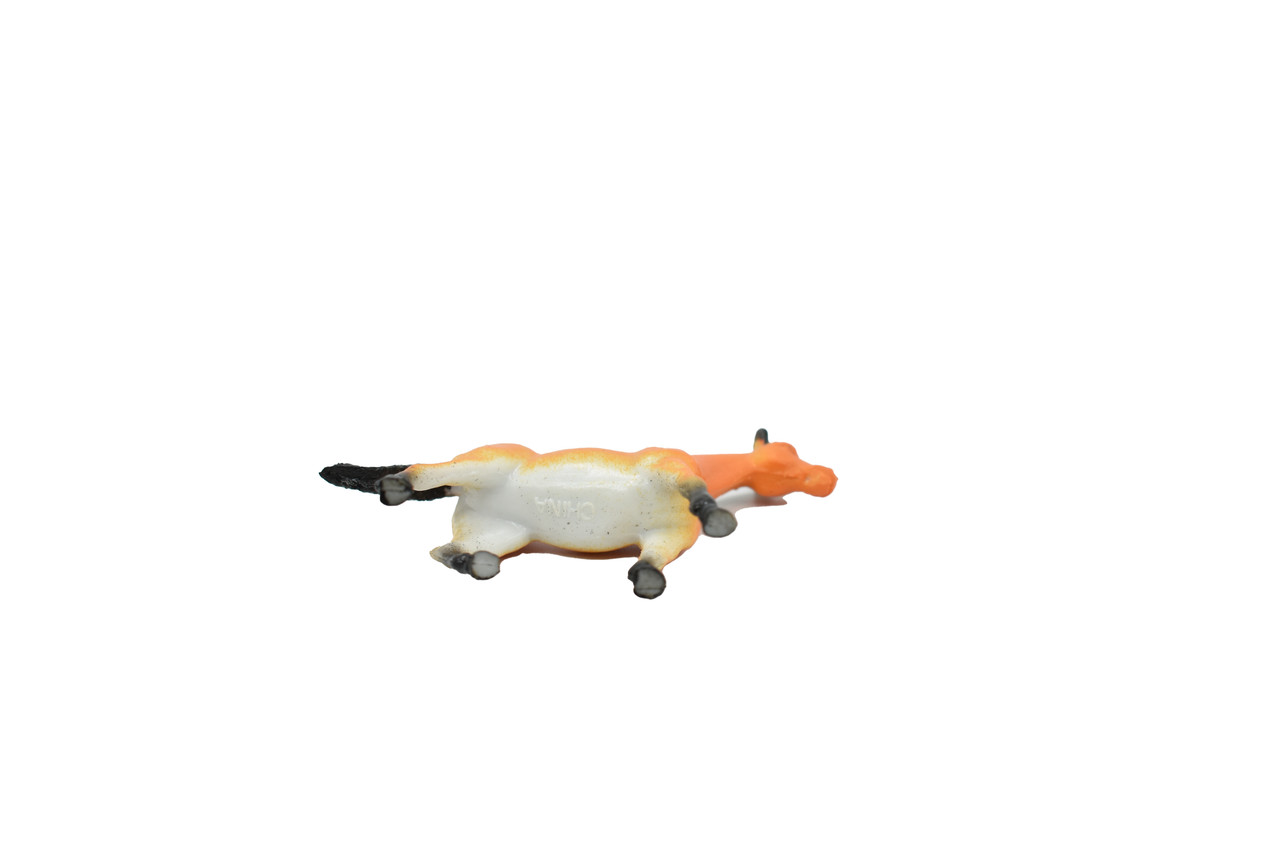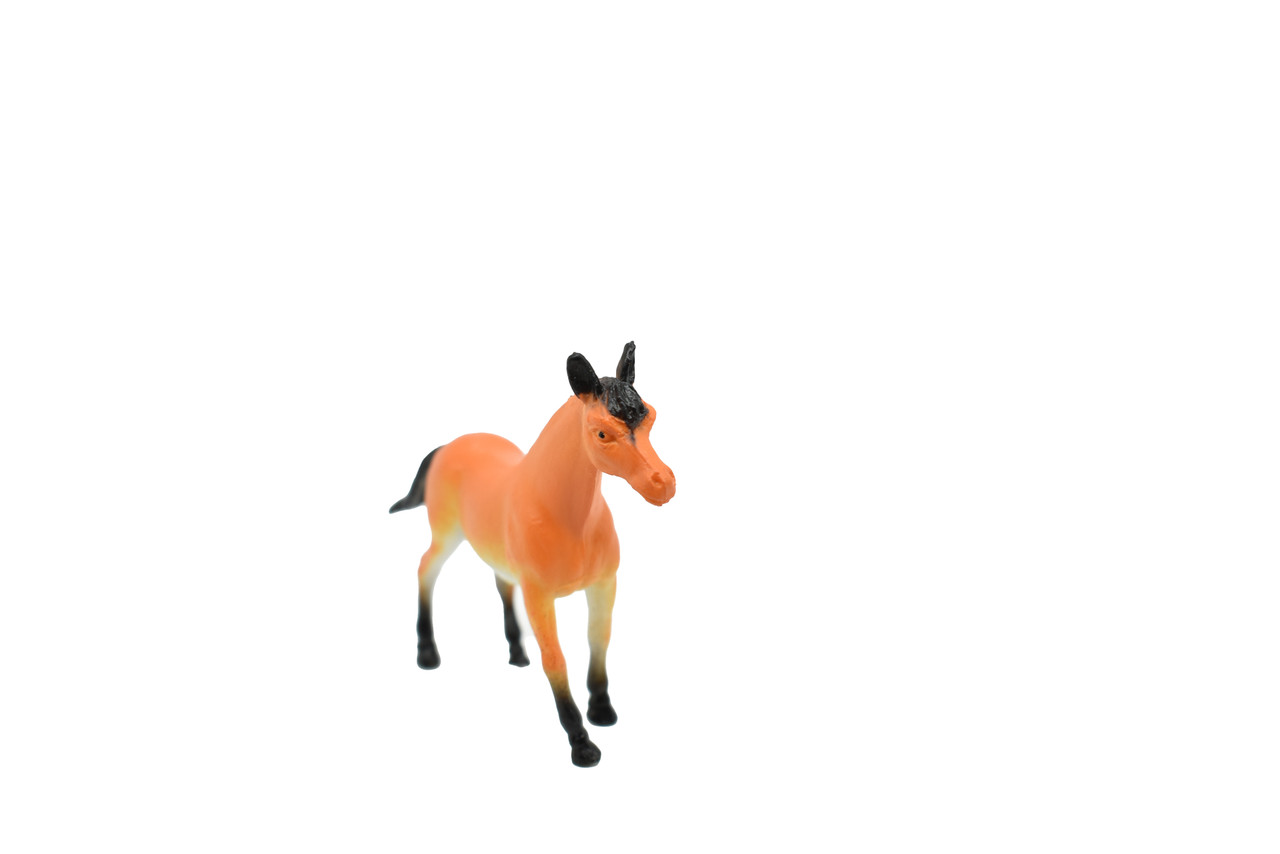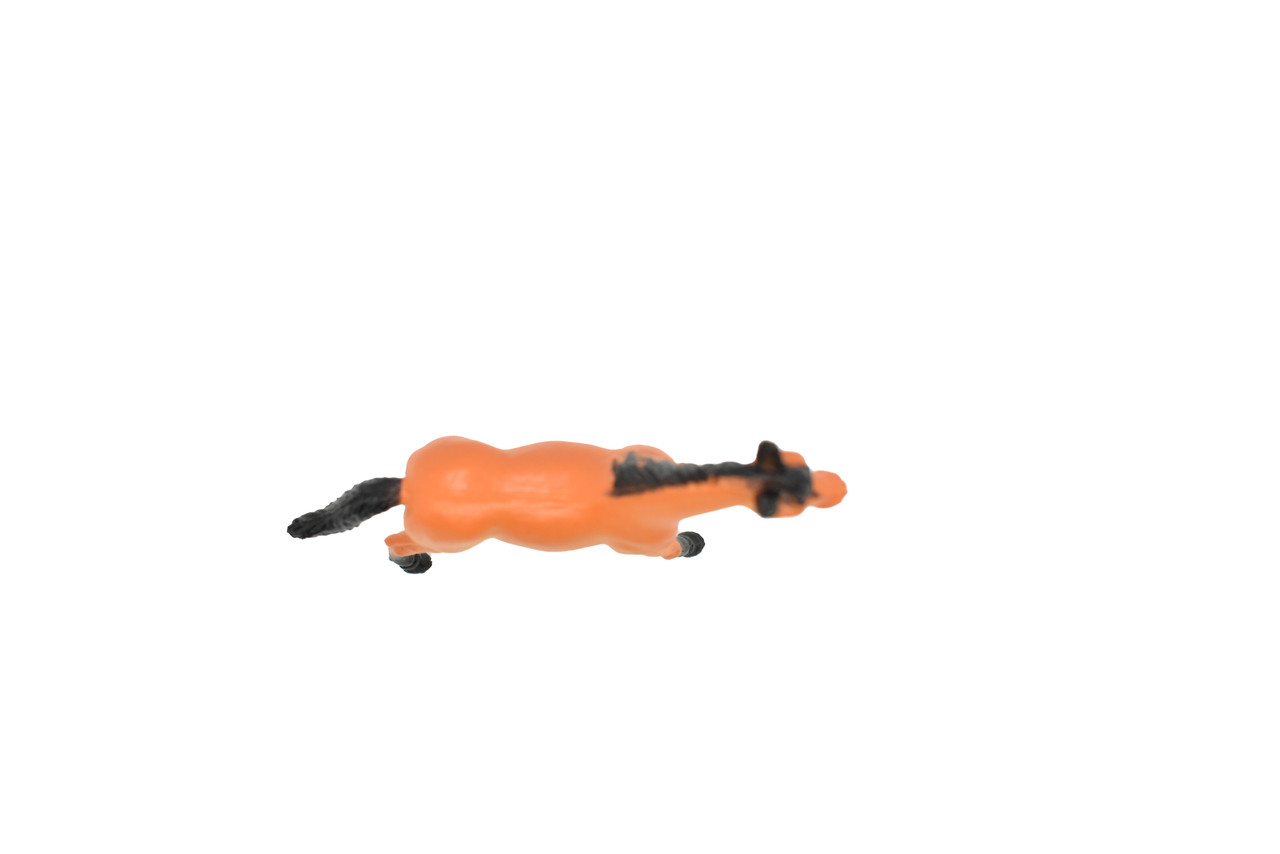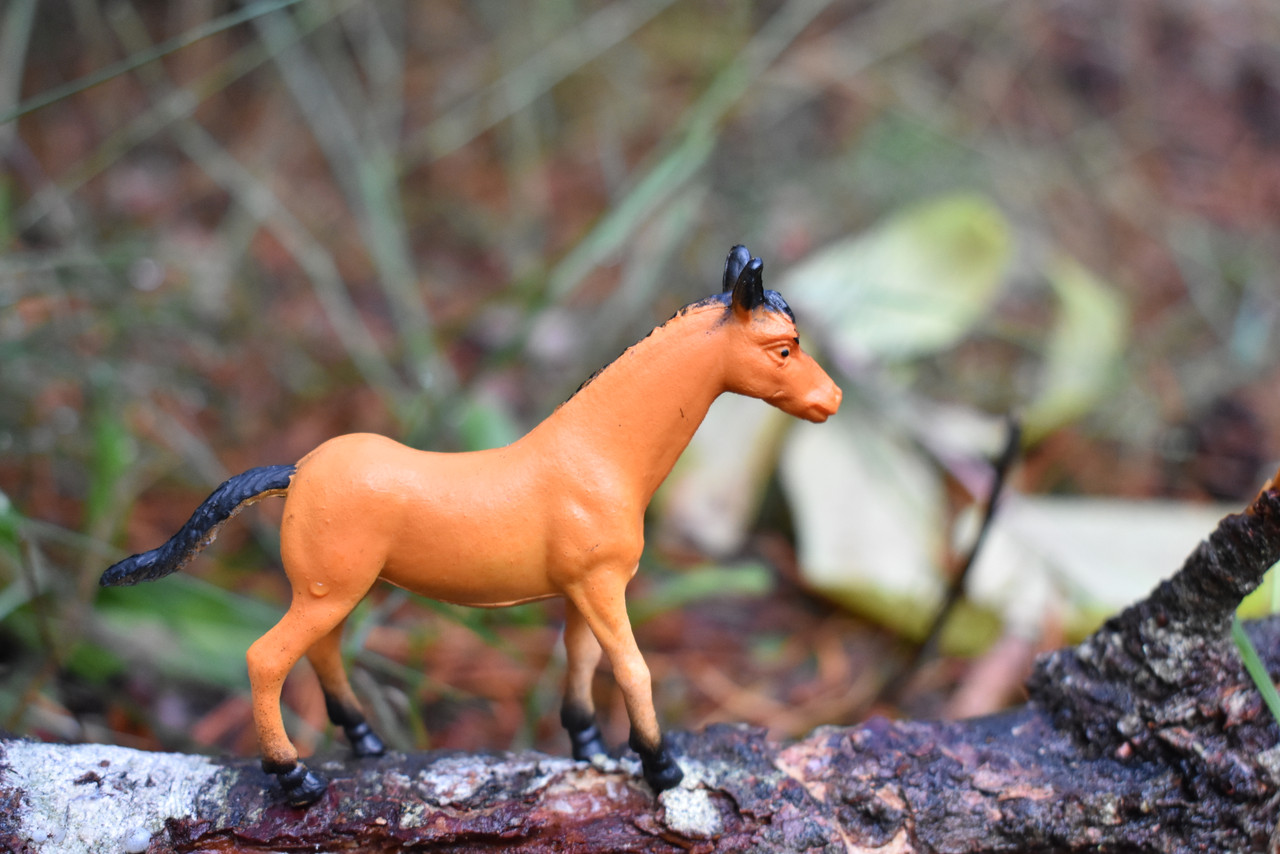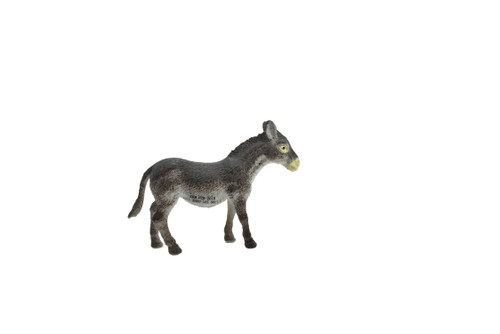Product Description
I don't know if you'd call our plastic horse figurine a chestnut, a buckskin, or what. If you have the answer, please let us know! However, since our model horse is made of plastic, it's probably OK for it to be a beautiful eye-catching warm pumpkin color. The black legs and tail add a striking finish to this nice plastic toy. Our plastic horse is 3 1/4 inches long when measured from its nose to the end of its tail. It stands up nicely to a height of 2 1/4 inches to the tips of its black ears. Our plastic horse has met all of the new U.S. child safety standards for children's toys in both the plastic and paint categories. Check out our other horse toys and gifts.
There is so much to say about horses, that it's hard to know where to start. In fact, I think we'll just give a brief overview. Horse information is very easy to find on the web, and we all know basically what a horse is. As with any animal, once you delve into the fascinating details, you can always learn more. The horse (Equus caballus) is a hoofed mammal, and all hoofed mammals are called ungulates. The horse is an odd-toed ungulate in the family Equidae, and has one toe on each foot. In the case of the horse, the one toe has become very large so that we hardly think of it as a toe. The odd-toed animals, Order Perissodactyla, include only 17 species, which is fewer than the other order, even-toed ungulates (Artiodactyla). In the Order Perissodactyla we find horses, zebras, donkeys, and other animals that resemble horses, but the order also includes tapirs and rhinos. All other hoofed animals such as deer, cows, and hippos, have either two or four toes on each foot. The horse has evolved over the past 45 to 55 million years from a small multi-toed creature into the large, single-toed animal of today. Horses are one of the animals for which we have the most complete fossil record, which makes it interesting to study their evolution. Humans began to domesticate horses around 4,000 BC, and their domestication is believed to have been widespread by 3,000 BC. Just think of all the ancient art and statuary that depict the relationship between horses and humans! By 2,000 BC, the use of domesticated horses had spread throughout the Eurasian continent. Although most horses today are domesticated, there are still endangered populations of the Przewalski's Horse, the only remaining true wild horse, as well as more common feral horses which live in the wild but are descended from domesticated ancestors. Horse breeding is a very specialized area of expertise, and many breeds have been developed, each with their own characteristics of color, conformation, abilities, shapes and sizes.
Collectible Wildlife Toys is the market leader in providing high quality, realistic toys of all types!
Every one of our items is heavily inspected for quality craftsmanship and authenticity. Our products make great gifts for your family and friends! Additionally, our lifelike animal figurines and plush make for great displays and educational sets. We are happy to serve our wide range of clientele from parents to educators, gift shop owners and many more!
Our team works hard to ensure you get a great toy. All products from CWG are checked for quality to ensure you receive order in perfect condition.
From plush sharks to educational animal growths cycle we offer the perfect toy or gift for any occasion. Our products have been ordered by educational groups, aquariums, zoos, and more.
Great customer service is guaranteed when you order from Collectible Wildlife Gifts, we want you to love your toy and have a simple ordering process, we are happy to assist with inquiries!



